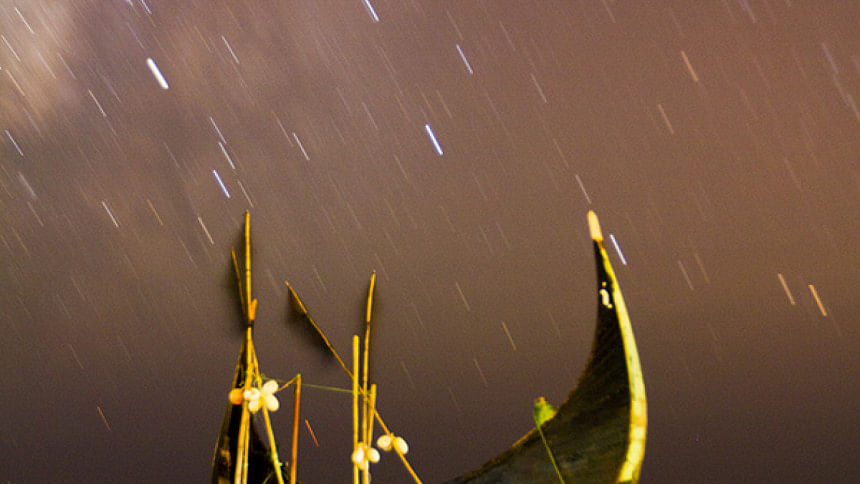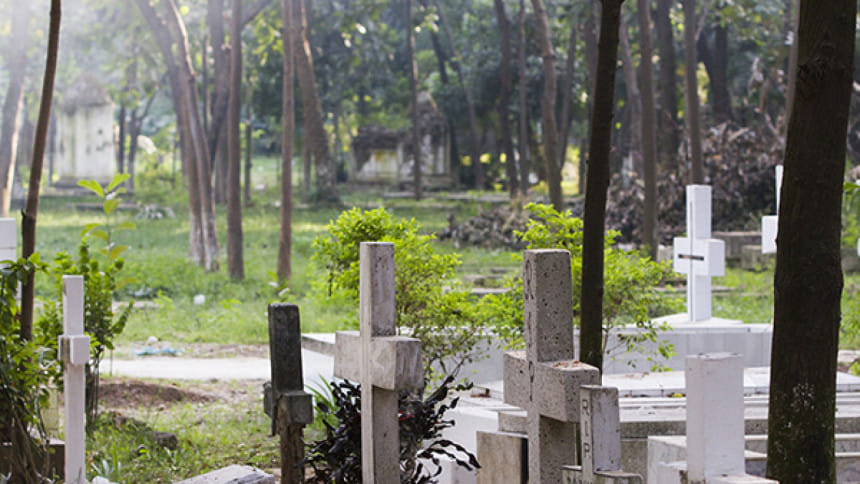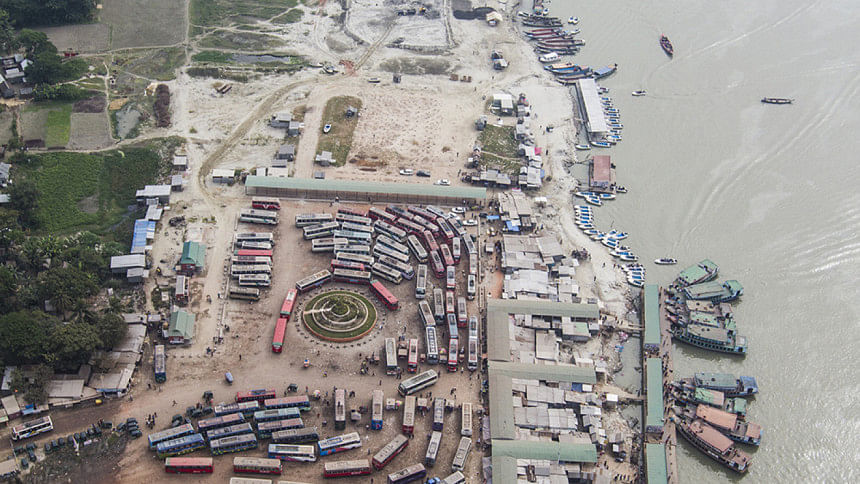Stories of your home

Many a traveller has braved the high seas, traversed the many aisles of rice fields, trekked the tall mountains and lived to write of their glorious adventures in this land of rivers - Bangladesh. People these days have found their travel streak in them and are packing their bags and heading off more often than not. However many Bangladeshis opt to go out of the country. While getting your passport tattooed is a wonderful thing, discovering this densely populated country that is home, can prove to be worthwhile as well. From Tetulia in the north to Teknaf in the south, Bangladesh is full of stories and the ecstatic joy of finding the deep secrets of your homeland is an experience like no other.
"I have travelled to many countries, from the exotic to the everyday from the orient to the occident, but I have found that coming back home and traversing deep into its forests is the one that enchants me the most," says Sayam U Chowdhury, conservation biologist and someone who travels around the country.
North-west Bengal
Often not a travel destination for many, north-west Bengal has many surprises. From the sweet curd in Bogra to the potato fields of Joypurhat and then on to the northern-most tip of Bangladesh - Tetulia, the simple eccentric beauty of the north is captivating.
"As someone who was visiting Bangladesh for the first time, there are many things of this country that enchanted me. I have visited quite a few districts in the country but my personal favourite is Gaibandha," says Brad Frank who was an exchange student from Canada with North South University.

"It was the million stars that light up the night sky, that I could see from one of the many sandbars that surface on the Brahmaputra River that made me fall in love with this place," he said.
The north has many adventures in store. Small villages, large prairies, small pockets of Shal forests, temples, old ruins-- packed with a quintessential Bengali experience.
Visit university town Rajshahi and find yourselves among the old ruins of Zamindar mansions, spend an evening on the banks of the Padma, go on a boat cruise and find yourself on the vast sandbars spanning the breadth of the river sometimes, or just walk along the beaten road of a village.
Head over to Puthia in Rajshahi boasting a large expanse of old Hindu temples and Zamindar houses.
Next up in the north adventures is Dinajpur, in search of the beautiful Kantajir Mandir in Kantanagar, Dinajpur. The late-medieval Hindu temple is one of the most magnificent religious structures dating back to the 18th century.
The temple belongs to the popular Hindu deity Kanta or Krishna and this is most popular with the Radha-Krishna cult (assembly of memorable love) in Bengal. The detailed terracotta work will leave you awestruck. Each tile boasts detailed artwork depicting the lives of mythological gods and goddesses in different forms and shapes.

It tells their story, showcasing their day-to-day lives and captures their story in the terracotta tiles for generations to come. Outside the temple you can have tea prepared with creamy milk of the cows reared on the temple premises.
And to cap off the north adventures, head over to Tetulia, the northern tip of Bangladesh. Motor-cycle rides, walks around the tea-gardens of Panchagarh, the fat white rice drowned in thin gravy and the rain all make for a quintessentially Bengali experience.
Apart from this, there are many treasures in the north, from Tajhat Palace in Rangpur to the old buildings of the British era—Nil Kunthis from the indigo farming days in Bangladesh—and the numerous pristine villages of the north.
Central Bangladesh
Here we have Kushtia, the legendary Lalon's home ground and where the pink-grey gharials occupy the waters. Not only can you visit Lalon's shrine and drown yourself in the soulful music, Kushtia has many other treasures on offer.
Take a boat ride on the Gorai and if you are lucky you may even spot the Bengal Fox, Indian Hare, Golden Jackal or the Jungle Cats on the sandbars of the Gorai.
Next on the list is the Hardinge Bridge, a maroon-red steel railway bridge over the river Padma located at Paksey. It is named after Lord Hardinge, who was the Viceroy of India from 1910 to 1916.
And for some history mixed with poetry, visit Shilaidaha Kuthibari in Kumarkhali.

Then move on to Tangail district. While many may think there is very little to do here, Tangail has much on offer. Zamindar houses dot the entire district- ephemeral and aristocratic; many of the old Zamindar houses are still in good shape. Mohera Zamindar Bari, Mosque of Korotia Zamindar Bari and Pakutia Zamindar Bari are a few options if you want to soak in all that history and be transported to days where horse riding to the jungle for an afternoon hunt was the norm.
Next on the central Bangladesh list is Munshiganj or Bikrampur as we know it. This was the political and cultural centre of Bangladesh in the days of the past. Now an agriculture hub, Bikrampur is scenic during the winters. Yellow mustard fields line the roads for as far and long as the eye can see. The small villages, ponds and colourful vibrantly dressed people bent under the beating sun all lend to the unique Bangladesh experience.
North-East Bangladesh
Here is Sylhet division, home to rolling hills, the vast haors, the evergreen rainforests, myriad waterfalls and the famed seven-layer tea. From the rain-forest in Srimangal to the waterfalls and lush green hills of Jaintapur to the vast wetlands of Sunamganj, this north-east division is on every traveller's list, and why not?
Sylhet district boasts of the beautiful clear waters of Jaflong. Bordering India on one side, the waters are crystal blue and the pebbles below smooth on your feet. Jaintia Hills are also a wonderful destination where the waterfalls come alive during monsoon and you can also pay a visit to the Khasi villages.

If you are someone who cannot decide between the mountains or the sea, then why not head over to the haors in Sunamganj; the vast expanse of water is never ending and the hills on one side will satisfy your need for mountains and the water.
Tanguar Haor in Sunamganj, Hakaluki Haor in Sylhet or Hail Haor in Srimangal all offer a unique niche for travellers looking for something different. Many migratory birds make their yearly stop over here. So if you have bird watching on your mind, this is your ideal destination.
Lounge in your boat or tent and watch as the northern pintal or baikkal teal flies by. The land is submerged, replaced with vast expanses of water. Spending nights on a boat, casting your net to catch fish - your meal for the day - or counting the stars as night falls on the water-lands: here is a promise of something new.
After a good dose of the haor, take a bus to Srimangal, the perfect city for monsoon, where you can read your favourite book and when you are famished - sink your teeth in some warm khichuri topped with beef and shatkora or you can simply sit in a rented bungalow at the Bangladesh Tea Resort and watch as lightning strikes and the tall Garjan trees sway in the cold winds.
You can also take the beaten down path in search of quaint hilltop Khasi villages or visit the Manipuri para in the city and spend a few bucks buying their local handicraft.
South-west Bangladesh
The largest mangrove forest in the world, where the Bengal tiger roars, the Barking Deer gallops through the Kewra trees, the shy Masked Finfoot rears its young and makes nests on the branches of Sundaris. The forest is brutal, the conditions harsh yet the beauty of this forest is like no other. It enchants those who visit it, captivates their mind and their soul as they see ebb and flow of water, as they experience the mangrove forest breath through the grounds. The King Cobra slithers by the forest floor while the Gangetic Dolphins come out to play as the tide changes course.

Here is the mosque city of Bagerhat, where the historic Shat Gombuj Mosque stands tall in all its glory. The historic city, listed by Forbes as one of the 15 lost cities of the world, This region is famous for guavas, more popularly known in Bangladesh as 'Bengal's Apple'. You will find the guava market in Jhalokathi Sadar Upazila and at Swarupkathi of the district.
The south-central region of Bangladesh also has an array of islands, quiet, secluded from the mainland there is Nijhum Dweep and Hatiya Island among others.
Deer roam around the grass of the islands and black and white Pied Avocets feed on the tiny shrimps and crabs that wash up on the shore.
South Bangladesh
The longest stretch of unbroken beach has been widely publicised. While many Bangladeshis flock to the beach town of Cox's Bazaar, the city is still charming. The long sandy beaches, hundreds of people, the waft of fish being fried in deep oil, together make this city. You can take a ride through the marine drive, small hills on one side and the Bay of Bengal crashing in on the other. Or you can take a speed boat ride to Moheshkhali Island, visit the Adinath temple, walk up the steps and take in the view of the planted mangroves and the ocean stretching out.
Almost 500 km away from the concrete jungle that is Dhaka and 10 km away from the mainland, across the blue waters of the Bay of Bengal lies the only coral island of Bangladesh - Saint Martin's Island.

This 8-km mass of island is fringed with coconut trees, boasts lush sandy white beaches and a very quiet, almost lethargic, village life. A cruise from Teknaf via Eagle-1, Kutubdia or Keari Sindbad will bring you to this small island. The Milky Way shines bright and clear in the night sky as the sun sets on the coral island.
Here you can go for a walk to the Chhera Dweep, a small island a little farther off Saint Martin's Island, indulge in the sweet prawns and the crispy fried Rupchanda fish freshly caught from the bay. The island is an excellent excuse to head out of busy Dhaka and soaks your feet in the crashing blue waves, relax in the sun's beating rays and enjoy the calm tranquillity this place epitomises.
If you have had enough of the sea, head over to the Chittagong Hill Tracts. One of the last places in Bangladesh that still boasts of old-growth forests, the Chittagong Hill tracts are home to the indigenous community of Bangladesh, Chakma, Mro, Marma communities call this place home.
You can go for a trek and scale the highest peak in Bangladesh—Keokradong. Bandarban, Rangamati and Khagrachhari districts make up the Chittagong Hill tracts. You can cruise through Kassalong River, and go sightseeing around Kaptai Lake. Decidedly atypical of Bangladesh, both in topography and culture, this largely Buddhist stronghold is the homeland of the Jumma people. It is a stunning region of hills, ravines and cliffs covered with dense jungles of bamboo, creepers and shrubs, and dotted with tall, slender waterfalls.
"Travelling in other countries is an eye-opening experience but when I travel in my own country I feel a sense of ownership, a sense of belonging, as though all this is mine," says a traveller who just returned from a tour of Myanmar, Vietnam and India. It has more than 50 Islamic monuments which have been found after removing the vegetation that had obscured them from view for many centuries. The site has been recognised as a UNESCO World Heritage Site in 1983 under criteria "as an outstanding example of an architectural ensemble which illustrates a significant stage in human history."
Moving a little farther from Bagerhat towards the south-central coast, we have the city of Barisal. Seeped in history, the backwaters of this district is the one that holds the most allure. Stagnant water, slow pace of the village life and the never ending hues of green give the backwaters its bewitching appeal.
In Barisal you will also find the largest floating guava market in the country. Country boats laden with guavas make their way in and out of the waters of the Kirtipasha creek.
The writer is an online journalist at the Digital Media Section of The Daily Star. She also works in various conservation projects in Bangladesh.

 For all latest news, follow The Daily Star's Google News channel.
For all latest news, follow The Daily Star's Google News channel. 



Comments